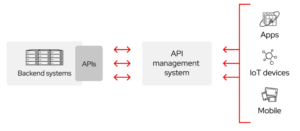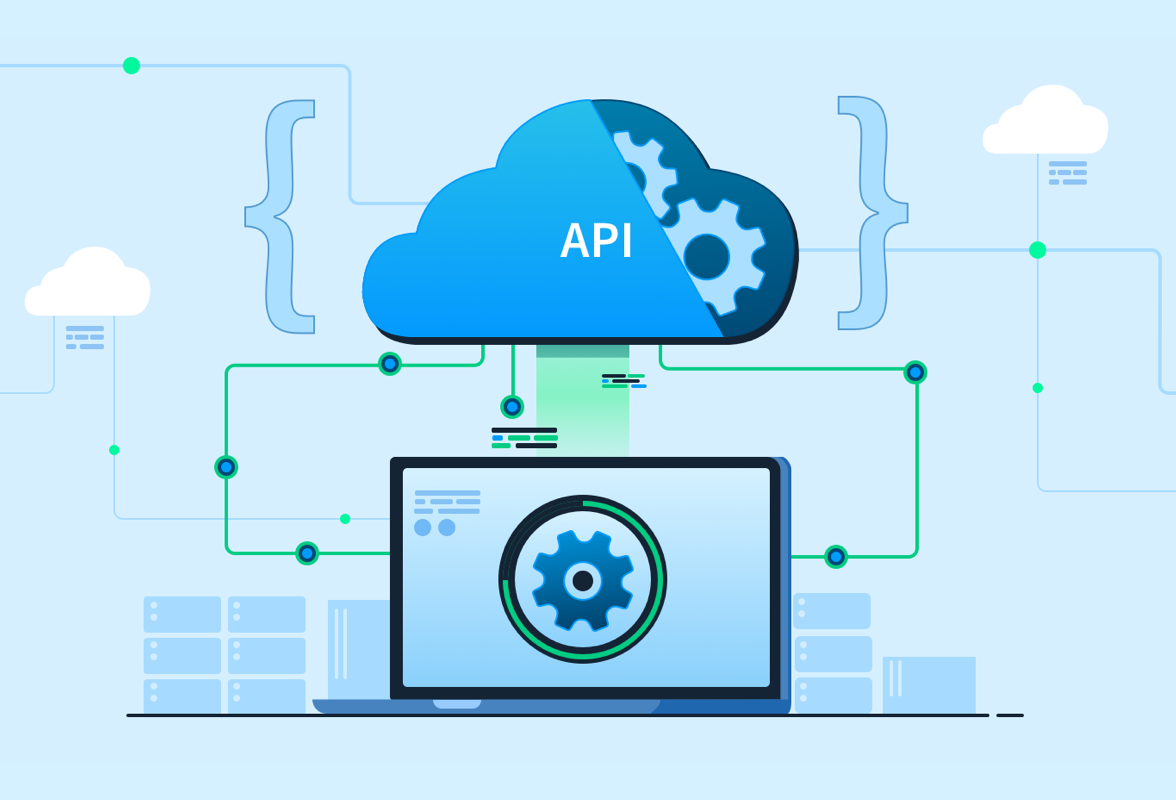Application programming interface (API) is a set of definitions and protocols for developing and integrating software applications.
How do APIs work?
APIs allow your product or service to communicate with other products and services without requiring you to understand how they’re built.
This can speed up and lower the cost of app development. APIs enable flexibility, simplify design, administration, and use. They allow for innovation when creating new tools and products—or managing current ones.
APIs are sometimes compared to contracts, including documentation that serves as evidence of a contract between two parties:
If party 1 submits a remote request in a specific format, party 2’s program will answer in the same manner.
APIs facilitate collaboration between business and IT teams by making it easier for developers to integrate new application components into an existing architecture.
Business requirements frequently evolve in reaction to rapidly changing digital markets, where new competitors might disrupt an entire industry with a single app.
APIs are a simple method to connect your own infrastructure via cloud-native app development. However they also allow you to share your data with clients and other third parties.
Because they may simplify and expand how you connect with your partners, as well as possibly monetize your data, public APIs have a particular business value (the Google Maps API is a popular example).

Alternatively, the book distributor could provide an API to check stock availability. There are several benefits to this approach:
- Letting customers access data via an API helps them aggregate information about their inventory in a single place.
- The book distributor can make changes to its internal systems without impacting customers, so long as the behavior of the API doesn’t change.
- With a publicly available API, developers working for the book distributor, book sellers or third parties could develop an app to help customers find the books they’re looking for. This could result in higher sales or other business opportunities.
Innovating with APIs
Exposing your APIs to partners or the public can:
- Create new revenue channels or extend existing ones.
- Expand the reach of your brand.
- Facilitate open innovation or improved efficiency through external development and collaboration.
Sounds great, right? But how can APIs do all that?
Assume that one of the company’s partners creates an app that aids in the discovery of books on bookshop shelves.
This enhanced experience attracts more customers to the bookshop, which is the distributor’s customer, and expands an existing revenue stream.
Sharing APIs with a restricted group of partners or the entire world can be beneficial. Each relationship raises your company’s brand awareness beyond its own marketing efforts.
By making technology available to everyone, such as using a public API, you can encourage developers to create an ecosystem of apps that revolve around your API. The more people who use your technology, the more inclined they are to do business with you.
Making technology available to the general people can result in innovative and unexpected effects. These outcomes can sometimes cause entire industries to be disrupted.
New businesses, such as a book borrowing service, could drastically alter our book distribution company’s economic model. Partner and public APIs allow you to tap into the creative energies of a bigger community than your own development team.
New ideas can come from anyone, and businesses must be aware of market changes and prepared to act on them.
APIs can be of assistance.
An extraordinarily brief history of APIs
APIs have been around since the dawn of computing, long before the personal computer. An API was typically utilized as a library for operating systems at the time. Although it occasionally carried messages between mainframes, the API was virtually usually local to the computers on which it functioned.
Hence APIs have finally broken free from their confines after nearly 30 years. By the early 2000s, they had established themselves as a vital technology for data integration over long distances.
Remote APIs
Remote APIs communicate over a network. By remote, we mean that the API is manipulating resources that are located outside of the computer performing the request.
Because the internet is the most extensively used communication network, most APIs are built using web standards.
Although not all remote APIs are web APIs, it’s safe to presume that they are.
In most cases, Web APIs use HTTP for request messages and provide a structure for response messages.
The most common format for these answer messages is an XML or JSON file.
Both XML and JSON are recommended formats because they deliver data in a format that is simple to manipulate by other apps.
SOAP vs. REST
As the use of online APIs has grown, a protocol specification called Simple Object Access Protocol, or SOAP, it helps standardize data communication.
SOAP-based APIs employ XML as their message format and accept queries over HTTP or SMTP. SOAP makes it easy for programs built in different languages or running in different environments to share data.

SOA vs. microservices architecture
Service-oriented architecture (SOA) and microservices architecture are the two architectural approaches that leverage remote APIs the most.
So the oldest of the two techniques, SOA, emerged as a way to better monolithic apps. Some functions can be provided by different apps that are loosely related through an integration pattern, such as an enterprise service bus, rather than by a single monolithic app that does everything (ESB).
While SOA is easier than monolithic design in most ways, it runs the danger of causing cascading changes throughout the environment if component relationships are not well. This added complexity reintroduces some of the issues that SOA was supposed to solve.
Hence microservices designs leverage specialized, loosely connected services in a similar way to SOA patterns.
However, they go even further in dismantling traditional structures. A common message system, such as RESTful APIs, is used by the services in the microservices architecture. They communicate with one other through RESTful APIs, which eliminate the need for complex data translation processes or additional integration layers. Using RESTful APIs speeds up the delivery of new features and updates, and even encourages it. Each service is distinct from the others.This lightweight architecture provides dynamic scalability for individual services and helps optimize distributed or cloud resources.
Click here to read more useful and interesting articles.

